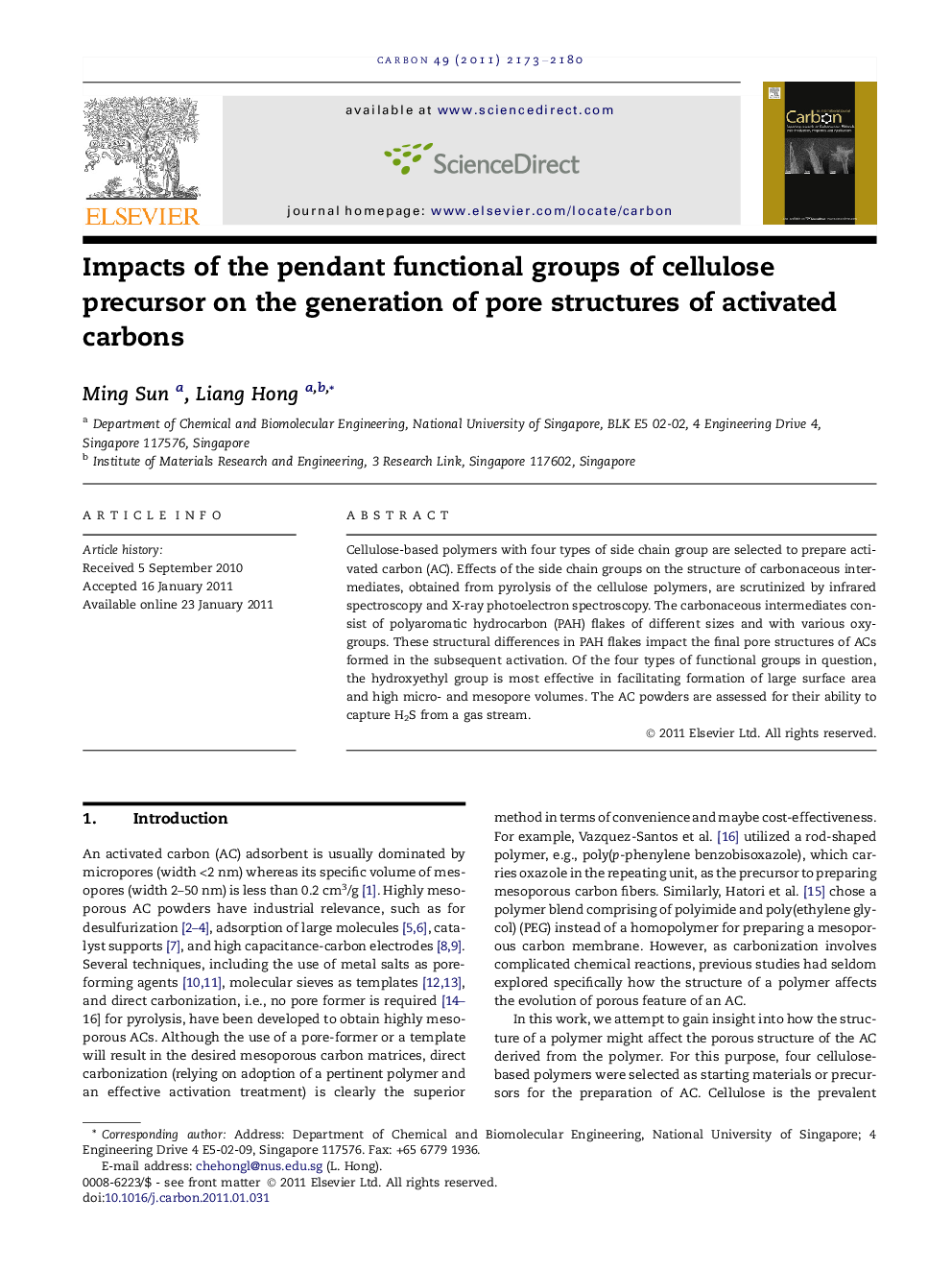| Article ID | Journal | Published Year | Pages | File Type |
|---|---|---|---|---|
| 1416345 | Carbon | 2011 | 8 Pages |
Cellulose-based polymers with four types of side chain group are selected to prepare activated carbon (AC). Effects of the side chain groups on the structure of carbonaceous intermediates, obtained from pyrolysis of the cellulose polymers, are scrutinized by infrared spectroscopy and X-ray photoelectron spectroscopy. The carbonaceous intermediates consist of polyaromatic hydrocarbon (PAH) flakes of different sizes and with various oxy-groups. These structural differences in PAH flakes impact the final pore structures of ACs formed in the subsequent activation. Of the four types of functional groups in question, the hydroxyethyl group is most effective in facilitating formation of large surface area and high micro- and mesopore volumes. The AC powders are assessed for their ability to capture H2S from a gas stream.
